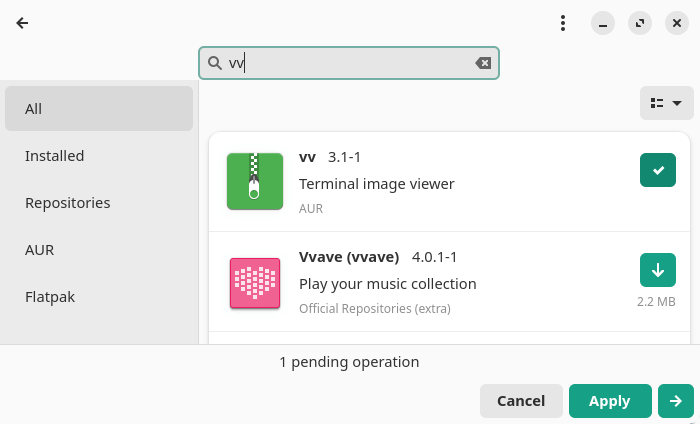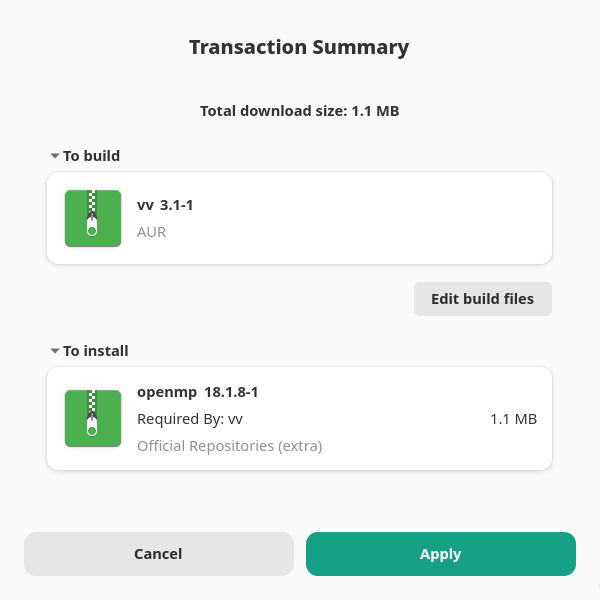Images are part of every day internet usage, and are particularly important for social media engagement. A good image viewer is an essential part of any operating system.
vv is different from the vast majority of image viewers. It’s a small command-line program to view images from the terminal. Not only does it display images in a terminal, it also supports the Kitty Graphics Protocol. This allows you to view high resolution images direct in a terminal. And the software also lets you watch animations within the terminal.
vv is free and open source software written in C++.
Installation
We evaluated vv using Manjaro, an Arch-based distro. We also tried to see whether the installation process was straightforward with the Ubuntu 24.10 distro. Let’s start with Manjaro first.
With Manjaro, Pamac (Manjaro’s front-end installation tool) lets us install vv from the Arch User Repository (AUR). The AUR is a community-driven repository. It contains package descriptions (PKGBUILDs) that allow users to compile a package from source with makepkg. The software is then installed via the in-house pacman, a lightweight, simple and fast package manager that allows for continuously upgrading the entire system with one command.

One thing that makes Pamac useful is that it installs any missing dependencies on your system.

The software built without any issues. Excellent.
How was the same process under Ubuntu 24.10? In short, it was a completely different kettle of fish.
Even though we’re running the latest version of Ubuntu, the version of CMake was too old. Our Ubuntu distro runs version 3.28.3 but the program needs CMake 3.29 for the build process. This wasn’t a big issue as we just need to uninstall cmake, grab the latest version from the Kitware GitHub repository, put the binaries in our PATH and add a symbolic link.
Our system was also missing dependencies which we had to manually install with the command:
$ sudo apt install libexif-dev libopenexr-dev libheif-dev libjxl-dev libraw-dev librsvg2-dev libsixel-dev
Then we cloned the project’s GitHub repository, changed into the newly created directory, and issued the command:
$ cmake -B build -DCMAKE_BUILD_TYPE=Release
But the software didn’t build successfully. Admittedly we didn’t try very hard to work out what the issue is. If you get the software running under Ubuntu 24.10, do drop a comment below.
We therefore tested the software in Manjaro only.
Next page: Page 2 – In Operation and Summary
Pages in this article:
Page 1 – Introduction and Installation
Page 2 – In Operation and Summary
